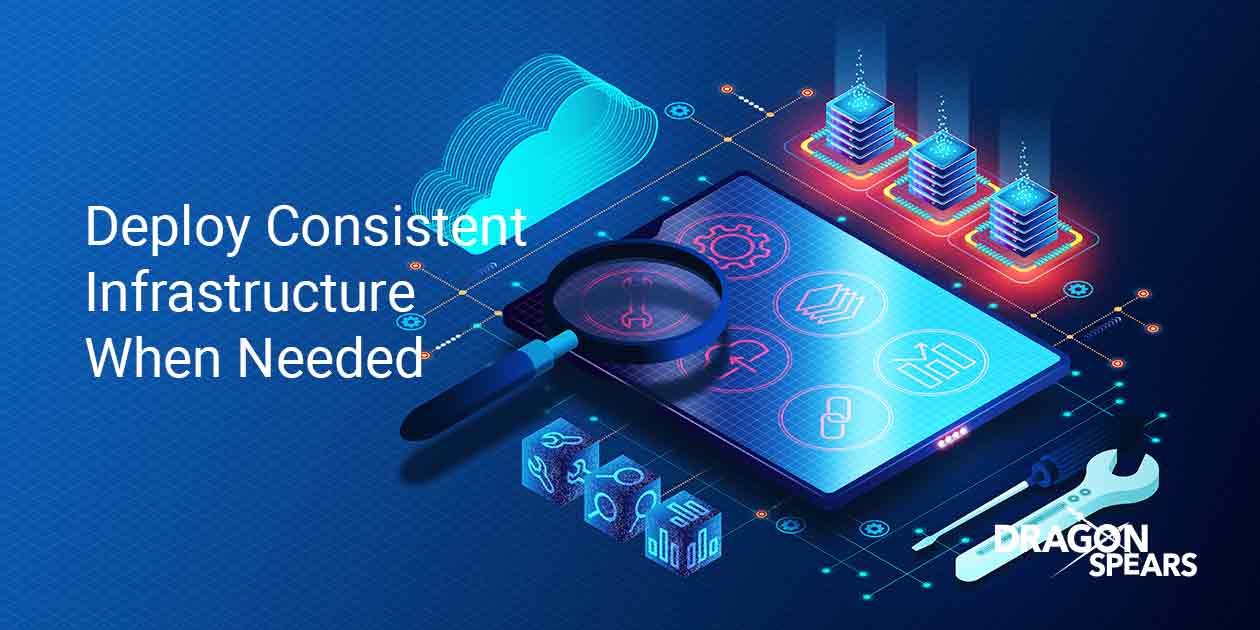
In modern software development, many moving pieces and systems often depend on other systems. It is important for infrastructure to be deployed quickly, consistently and in a controlled fashion. One way to achieve that is to transition software development practices into managing infrastructure, resulting in Infrastructure as Code (IaC). Here's an overview of where you can use IaC to improve the quality and process of your platform and some tools to help your organization achieve it.
The Value of IaC
One of the key values of IaC is to deploy consistent infrastructure whenever needed and to have a sole source of truth. You no longer need to rely on manual configurations that only specific individuals may be aware of, settings quickly changed and not documented, or any of a myriad of issues when manually maintaining infrastructure. IaC allows for a controlled process of updating infrastructure through code repositories, version control and pull requests. Infrastructure can also be deployed via CI\CD pipelines to remove more manual steps.
Popular Tools for IaC Implementation
Depending on what you are trying to achieve, a variety of tools can be used today to assist with implementing IaC. Here are some popular tools and examples of how they can be used.
Terraform
Terraform is an IaC tool created by HashiCorp that uses a declarative markup to allow the control of low-level components such as compute, storage, and networking resources, as well as high-level components such as DNS entries and SaaS features. It uses a series of Providers to interface with thousands of different SaaS, Cloud providers, and associated infrastructure. If it has an API, Terraform can control it.
Example: Using the official Auth0 provider. It is possible to configure an Auth0 tenant to control your Authorization system. You can maintain federated connections, social integrations, email templates and customized authentication hooks, all via Terraform.
Ansible
Ansible is an IaC tool that is open-source and managed by RedHat. It can be used for infrastructure provisioning, configuration management, or application deployment. Ansible can control On-Premise infrastructure as well as cloud infrastructure. Utilizing Ansible Playbooks to run scripts allows for controlling various infrastructures and can be paired with Ansible Tower from Oracle to have an efficient GUI to manage your Ansible playbooks.
Example: Utilizing Ansible, you can deploy and configure a web server and associated database to a server in seconds.
AWS CloudFormation
CloudFormation is an AWS service that allows for the scripted control of AWS infrastructure. Similar to Terraform, it can control most AWS resources but is specific to the AWS cloud. Template files contain all the information for a given resource or series of resources. These templates are declarative and can be written in JSON or YAML, and many ready-to-use templates are available. Using CloudFormation, you can deploy these template files to manage your AWS infrastructure.
Example: Updating a template to add a new Ingress route to a network firewall.
Azure Resource Manager
Azure Resource Manager is the built-in deployment and management service for Azure. Utilizing Azure Resource Manager (ARM) templates, it is possible to control all of the resources available within Azure. Like AWS CloudFormation, this product is specific to a single cloud, in this instance, Azure. It also offers all the benefits of scripted control of resources like Terraform and can control new Azure resource types as soon as they are released.
Example: Using an ARM template to update an Azure Monitor rule to send an alert based on new criteria.
Overall, in modern technology stacks, it is essential to scale infrastructure quickly and reliably with a known consistent result. IaC is the best way to achieve and control this. Many products can be used based on a variety of factors, and they all deliver value. If you want to learn more about implementing Infrastructure as Code, reach out and let us help you figure out what could be best for your business.

